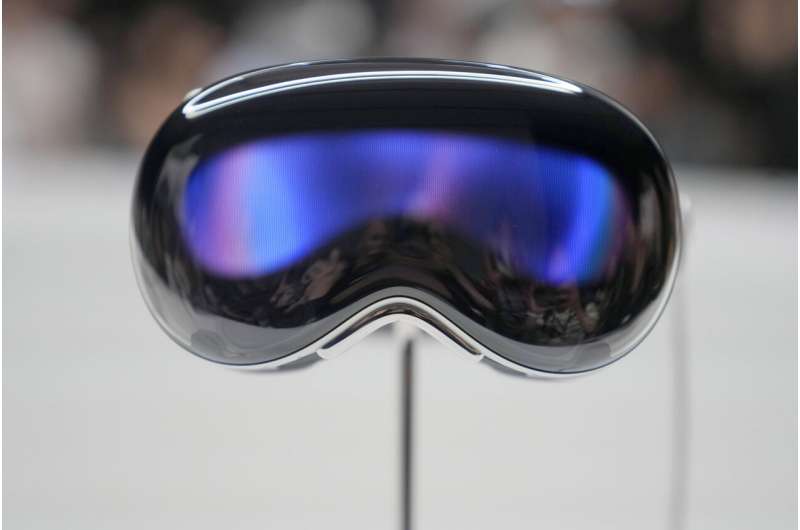

Why Apple is pushing the term 'spatial computing' along with its new Vision Pro...
source link: https://techxplore.com/news/2024-02-apple-term-spatial-vision-pro.html
Go to the source link to view the article. You can view the picture content, updated content and better typesetting reading experience. If the link is broken, please click the button below to view the snapshot at that time.

February 3, 2024
Why Apple is pushing the term 'spatial computing' along with its new Vision Pro headset
by Michael Liedtke

With Apple's hotly anticipated Vision Pro headset hitting store shelves Friday, you're probably going to start to see more people wearing the futuristic googles that are supposed to usher in the age of "spatial computing."
It's an esoteric mode of technology that Apple executives and their marketing gurus are trying to thrust into the mainstream. This while avoiding other more widely used terms such as "augmented reality" and "virtual reality" to describe the transformative powers of a product that's being touted as potentially monumental as the iPhone that came out in 2007.
"We can't wait for people to experience the magic," Apple CEO Tim Cook gushed Thursday while discussing the Vision Pro with analysts.
The Vision Pro also will be among Apple's most expensive products at $3,500—a price point that has most analysts predicting the company may only sell 1 million or fewer devices during its first year. But Apple only sold about 4 million iPhones during that device's first year on the market and now sells more than 200 million of them annually, so there is a history of what initially appears to be a niche product turning into something that becomes enmeshed in how people live and work.
If that happens with the Vision Pro, references to spatial computing could become as ingrained in modern-day vernacular as mobile and personal computing—two previous technological revolutions that Apple played an integral role in creating.
So what is spatial computing? It's a way to describe the intersection between the physical world around us and a virtual world fabricated by technology, while enabling humans and machines to harmoniously manipulate objects and spaces. Accomplishing these tasks often incorporates elements of augmented reality, or AR, and artificial intelligence, or AI—two subsets of technology that are helping to make spatial computing happen, said Cathy Hackl, a long-time industry consultant who is now running a startup working on apps for the Vision Pro.
"This is a pivotal moment," Hackl said. "Spatial computing will enable devices to understand the world in ways they never have been able to do before. It is going to change human to computer interaction, and eventually every interface—whether it's a car or a watch—will become spatial computing devices."
In a sign of the excitement surrounding the Vision Pro, more than 600 newly designed apps will be available to use on the headset right away, according to Apple. The range of apps will include a wide selection of television networks, video streaming services (although Netflix and Google's YouTube are notably absent from the list) video games and various educational options. On the work side of things, videoconferencing service Zoom and other companies that provide online meeting tools have built apps for the Vision Pro, too.
But the Vision Pro could expose yet another disturbing side of technology if its use of spatial computing is so compelling that people start seeing the world differently when they aren't wearing the headset and start to believe life is far more interesting when seen through the goggles. That scenario could worsen the screen addictions that have become endemic since the iPhone's debut and deepen the isolation that digital dependence tends to cultivate.
Apple is far from the only prominent technology company working on spatial computing products. For the past few years, Google has been working on a three-dimensional videoconferencing service called "Project Starline" that draws upon "photorealistic" images and a "magic window" so two people sitting in different cities feel like they are in the same room together. But Starline still hasn't been widely released. Facebook's corporate parent, Meta Platforms, also has for years been selling the Quest headset that could be seen as a platform for spatial computing, although that company so far hasn't positioned the device in that manner.
© 2024 The Associated Press. All rights reserved. This material may not be published, broadcast, rewritten or redistributed without permission.
Recommend
About Joyk
Aggregate valuable and interesting links.
Joyk means Joy of geeK